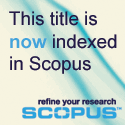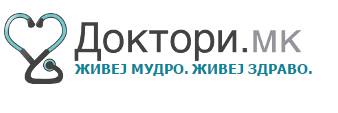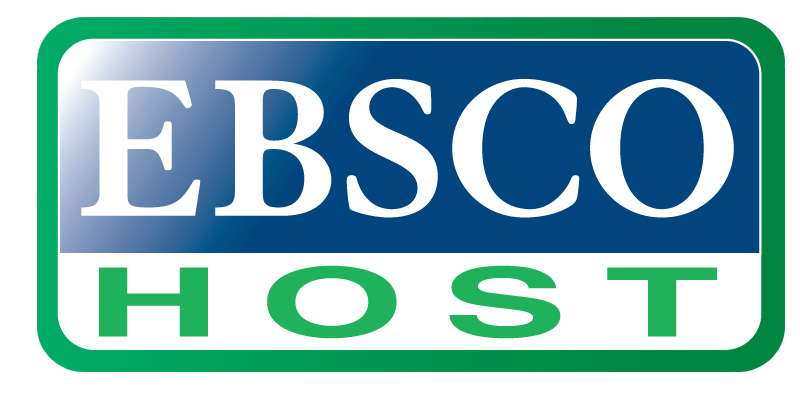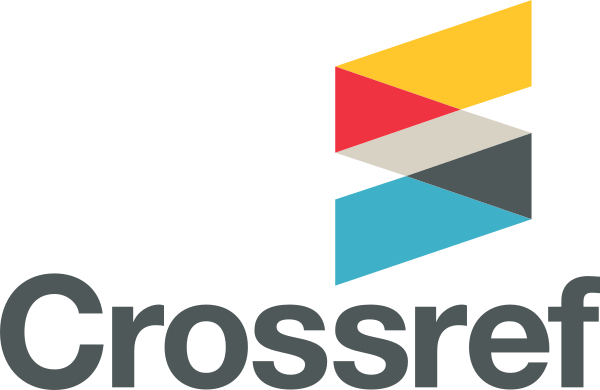JSER Policies
JSER Online
JSER Data
Frequency: quarterly
ISSN: 1409-6099 (Print)
ISSN: 1857-663X (Online)
Authors Info
- Read: 55956
|
ЕТИОЛОГИЈА НА АУТИЗМОТ
Владимир ТРАЈКОВСКИ
Филозофски факултет Скопје, Македонија |
|
ETIOLOGY OF AUTISM
Vladimir TRAJKOVSKI
Faculty of Philosophy Skopje, Macedonia |
|
|
|
|
|
Вовед |
|
Introduction |
|
Аутизмот е тешко развојно нарушување, карактеризирано со социјални дефицити, нарушена комуникација и рестриктивни и репетитивни обрасци на однесување (1). |
|
Autism is a severe developmental disorder characterized by social deficits, impaired communication, and restricted and repetitive patterns of behaviour (1). |
|
Сусцептибилни гени за аутизам |
|
Susceptibility genes for autism |
|
Во психијатриската генетика се користат linkage и асоциајционите стратегии за да се идентификуваат сусцептибилните гени (3). Познати се повеќе ветувачки, делумно повторени, наоди што се однесуваат на локусите на хромозомите 2 и 7, како и на други хромозомски локации. |
|
Psychiatric genetics use linkage and association strategies, to identify susceptibility genes. A major growth area in psychiatric genetics as applied to ASD concerns the search, using linkage and association strategies, to identify susceptibility genes (3). There are very promising, partially replicated, findings with respect to loci on chromosomes 2 and 7, as well as on other chromosome locations. |
|
Може да се предвиди со одредена доверба дека актуелните сусцептибилни гени ќе бидат одредени дури во следната деценија, ако не и порано од тоа. Linkage-стратегиите го проучуваат степенот со кој заболените членови во исто семејство покажуваат конаследност за исти генетски локуси на одредени хромозоми. Асоцијативните стратегии, спротивно, одредуваат дали индивидуите со АСН се разликуваат од контролите во нивните обрасци на алелни варијации на специфични гени. Ова значи дека секое лице наследува една од повеќе можни алелни копии на секој ген. Некои копии ќе го носат ризикот, а други не. Иако може да се очекува дека идентификацијата на сусцептибилните гени ќе биде многу корисна во оформувањето на биолошките истражувања што ќе ја одредат невролошката основа на аутизмот, сепак од друга страна помалку е веројатно дека гените ќе бидат од голема практична полза во однос на скринингот или дијагностиката. |
|
It may be anticipated, with some confidence, that the actual susceptibility genes will be determined during the next decade, if not rather earlier than that. Linkage strategies study the degree to which affected members in the same family show co-inheritance of the same genetic loci on particular chromosomes. Association strategies, by contrast, determine whether individuals with ASD differ from controls in their pattern of allelic variations of specific genes. That is, each person inherits one out of several possible allelic copies of each gene. Some copies will carry risk whereas others will not. Although it may be expected that the identification of susceptibility genes will be enormously helpful in shaping the biological research that will determine the neural basis of autism, it is much less likely that the genes themselves will be of much practical utility in terms of either screening or diagnosis. |
|
|
|
|
|
Мутации на еден ген |
|
Single gene conditions |
|
Eдинствена востановена мутација на еден ген, асоцирана со АСН, е туберозната склероза (4). Најдобрата проценка укажува дека таа се среќава кај околу 1 до 3% (5). Иако асоцијацијата со АСН е добро утврдена, причинските механизми инволвирани во настанокот, се помалку разбрани. Веројатно е важно да се напомене дека асоцијацијата со АСН е особено означена само кога туберозната склероза е асоцирана со тешка ментална ретардација, тешка епилепсија и со локација на туберите во темпоралниот лобус (6).
|
|
The only single gene condition with an established association with ASD is tuberous sclerosis (4). The best estimates suggest that this is found in about 1% to 3% of cases of ASD (5). Although the association with ASD is well established, the causal mechanisms that are involved is less well understood. It is probably important that the association with ASD is particularly marked only when tuberous sclerosis is associated with severe mental retardation, severe epilepsy and the location of tubers in the temporal lobe (6). |
|
Хромозомски аномалии |
|
Chromosome anomalies |
|
Најмногу докази за поврзаноста меѓу хромозомските аномалии и АСН доаѓаат од изолирани прикази на случаи (7). Тие се со мала употреба во тестирањето на причинските хипотези и поголема доверба треба да се има во систематските студии било тоа да е општата популација или клинички примероци. Почетно, најсилните тврдења се однесуваа на претпоставената асоцијација меѓу Фрагилниот X-синдром и аутизмот. Почетните тврдења за силна асоцијација беа базирани врз незадоволителните методи на клеточната култура и откако ДНА-методите станаа достапни, беше евидентно дека цитолошката идентификација на фрагилните места води до многу лажно позитивни резултати (8). Систематските истражувања на големи примероци на индивидуите со АСН покажале дека само околу 2 до 3% покажуваат Фрагилна X-аномалија (9). Ова е уште важна асоцијација; но евидентно е дека таа вбројува многу мала пропорција на случаи со АСН. Од друга страна, истражувањата на индивидуите за кои се знаело дека имаат Фрагилна X-аномалија покажало дека мошне висока пропорција покажува социјални и комуникативни абнормалности од таков тип што може да се помеша со аутизам (10). Друга хромозомска аномалија од често асоцираните со АСН се однесува на мајчински пренесената интерстициелна дупликација на хромозомот 15 (11). Систематските истражувања на хромозомските аномалии во серија на индивидуи со АСН покажала дека приближно 5% покажуваат аномалии од еден или друг вид. Овие сосема се разликуваат и во најголем број случаи нивната клиничка значајност останува нејасна.
|
|
Most of the evidence on connections between chromosome anomalies and ASD come from isolated case reports (7). These are of little use in testing causal hypotheses and greater reliance needs to be placed on systematic studies of either general population or clinic samples. Initially, the strongest claims concerned the supposed association between the Fragile X-anomaly and autism. The initial claims of a strong association were based on unsatisfactory cell culture methods and, once DNA-methods became available, it was evident that the cytological identification of fragile sites led to many false positives results (8). Systematic surveys of large samples of individuals with an ASD have shown that only about 2% to 3% show the Fragile X anomaly (9). This is still a meaningful and significant association but it is evident that it accounts for a very small proportion of cases of ASD. On the other hand, surveys of individuals known to have the Fragile X anomaly have shown that quite a high proportion show social and communicative abnormalities of a kind that could be confused with autism (10). The other chromosome anomaly at all commonly associated with ASD concerns the maternally transmitted interstitial duplications of chromosome 15 (11). Systematic surveys of chromosome anomalies in a series of individuals with an ASD have shown that approximately 5% show anomalies of one kind or another. These are quite varied and, in most cases, their clinical significance remains uncertain. |
|
Медицински состојби и аутизам |
|
Medical conditions and autism |
|
Во литературата има разни дебати кои се однесуваат на честотата со која АСН е асоциран со одредени дијагностицибилни медицински состојби кои, веројатно, биле вмешани во причинските процеси (12). Разумна проценка е дека некаде околу 10% од индивидуите со АСН имаат некакво потенцијално значајно идентифицирано соматско заболување или нарушување. Ова значи дека соодветно медицинско иследување е неопходно во сите случаи. Општ консензус е дека овие иследувања треба да вклучат внимателен медицински преглед, вклучувајќи и употреба на Wood-ово светло за да може да се детектира туберозната склероза, дека кариотипизацијата треба рутински да биде направена, а исто така дека треба да бидат вклучени и ДНА-методи за да се дијагностицира Фрагилна X-аномалија. Иако некои скандинавски истражувачи заговараат некои агресивни методи како рутински, вклучувајќи и лумбална пункција, мозочно скенирање со користење општа анестезија и др. (13), доказите изгледа сугерираат поконзервативен пристап, каде што широчината и видот на медицинското истражување се одредени врз база на наодите од клиничката историја и клиничкиот преглед. |
There have been various debates in the literature concerning the frequency with which ASD are associated with definite diagnosable medical conditions that are likely to have been implicated in the causal processes (12). A reasonable estimate would be that something in the order of 10% of individuals with ASD has some potentially relevant identifiable somatic disease or disorder. This means that an appropriately medical assessment is essential in all cases. The general consensus is that this should include careful medical examination, including the use of Wood’s light, in order to detect tuberous sclerosis, that karyotyping should be routinely undertaken, but also that this should include the use of DNA-methods to diagnose the Fragile X-anomaly. Although some Scandinavian researchers have advocated agressive further investigations as a routine - including lumbar puncture, brain scanning using a general anaesthetic, etc. (13), the evidence would seem to suggest a more conservative approach in which the extent, and type, of medical investigations are determined on the basis of the clinical history and clinical examination findings. |
|
|
|
|
|
|
Пренатални влијанија |
|
Prenatal influences |
|
Интраутерини инфекции и токсини |
|
Intra-uterine infections and toxins |
|
Иако главното внимание во истражувањата е насочено кон генетските влијанија на аутизмот и на медицинските состојби, доказите се јасни дека повеќето од АСН се сочинети од мултифакториелни нарушувања. |
|
Although the main research attention has focused on genetic influences in autism and on associated medical conditions, the evidence is clear cut that most ASD constitute multifactorial disorders. |
|
Ова значи дека некои видови на негенетски фактори, исто така, веројатно, играат улога во етиологијата, и покрај тоа што ние мошне малку знаеме за нив.
|
|
That means that some kinds of nongenetic factors are also likely to play a role in etiology, even if we know little about them. Isolated case reports have suggested that a range of possible intra-uterine infections and toxins could play a causal role in the development of ASD in individual cases (11, 14). These include various possible maternal circumstances that could affect the foetus including hypothyroidism, thalidomide use, valproic acid use, cocaine or alcohol use, and congenital cytomegalovirus infection. None of these have been prominent in any of the epidemiological studies of ASD and it seems unlikely that they constitute commonly risk-factors for ASD. |
|
Акушерски компликации |
|
Obstetric complications |
|
Од првото собирање податоци општо беше најдено дека аутизмот има тенденција да биде почест кај првородените од две деца, но многу почест кај последните родени каде што има повеќе деца (16). Исто така, било најдено дека акушерските компликации се почести кај индивидуите со аутизам, отколку кај нивните здрави браќа и сестри или кај контролите (17). Овие докази сугерираат дека акушерските компликации не го одредуваат ризикот од надворешната средина, туку тие може да се одразат на генетски абнормален фетус (17).
|
|
Since the first pulling together of the evidence, it has generally been found that autism tends to be more common in the firstborn in sibships of two but more common in the last born in larger sibships (16). Also it has usually been found that obstetric complications are more common in individuals with autism than in their unaffected siblings or in controls (17). The balance of the evidence suggests that the obstetric complications do not constitute an environmentally mediated risk; rather, they may reflect a response to a genetically abnormal foetus (17). |
|
Социјална класа на родителите и земјата на потекло |
|
Parental social class and country of origin |
|
Следејќи го Канеровиот првичен извештај дека децата со аутизам, веројатно, имале родители со висок социо-економски статус (18). Но, Wing (19) и Schopler и сор. (20) не го нашле овој наод. Нивните студии биле фалични, бидејќи не ја зеле во пресметката ет-ничката припадност. Најновите истражувања не го испитувале социјалниот статус систематски, туку со еден можен исклучок во студијата на Fombonne и сор., каде што малкумина што го испитувале, не нашле никаква асоцијација. Заради тоа повеќето критичари заради тоа заклучиле дека веројатно не постои асоцијација (21). Тоа е веројатно вистина, но треба да се истакне дека доказите за донесување заклучок се слаби. Постојат индикации дека аутизмот во Велика Британија може да е почест кај деца од родители со Афро-Карипско потекло, та Gillberg и Gillberg известиле за зголемен број кај деца на имигранти во Шведска. Исто и со социјалната класа наодите се контрадикторни, неубедливи и базирани врз мал број случаи (21).
|
|
Following Kanner’s initial report that children with autism were likely to have parents of a high socio-economic background (18). But, Wing (19) and Schopler et al. (20) did not find this. Their studies were both flawed by a failure to take ethnicity into account. Most recent surveys have not examined social background systematically but, with one possible exception in the study of Fombonne et al., the few that have done so have not found any association. Most reviewers have, therefore, concluded that probably there is no association (21). That is likely to be true but it has to be said that the evidential base for the conclusion is weak. There has been some indication that autism may be more common in the UK in children born to parents of Afro-Caribbean background and Gillberg and Gillberg reported an increase in Sweden for children born to immigrant parents. As with social class, the findings are contradictory, inconclusive and based on small numbers (21). |
|
Монозиготни близнаци |
|
Monozygotic twinning |
|
Оние што не се занимаваат со генетика претпоставуваат дека негенетските фактори, вклучени во етиологијата на АСН, неопходно мора да вклучат некоја форма на специфичен средински ризик (22). На пример, Greenberg и сор. (23), и исто така Betancur и сор. (24), известиле за очигледно зголемување на бројот на близнаци меѓу зафатените двојки (браќа/сестри) со аутизам. Ако овој наод се докаже како неспорен, тоа ќе укаже дека да се биде близнак е ризик-фактор за аутизам. Тоа би требало да се случува поради зголемениот ризик од акушерски компликации кај близнаците или поради тоа што монозиготната близначка бременост создава форма на конгенитална аномалија (25). Конгениталните аномалии биле почесто најдени кај индивидуите со аутизам. Тие, веројатно, го покажуваат начинот на кој развојот кој , веројатно е програмиран, може да тргне на лошо (26). Конгениталните аномалии се почести кај близнаците отколку кај единечните раѓања и се почести кај децата родени од постари мајки, отколку кај оние родени од помлади (27). Последователно на тоа, тоа би значело дека овие полуслучајни развојни вознемирувања може да ги засилат споредните ефекти на генетската склоност кон АСН. Треба да биде забележано дека конгениталните аномалии покажуваат покачена стапка на широк ранг на психијатриски нарушувања, такашто ризикот е без специфично значење за АСН. Откривањето на пристрасности веројатно имаат главна улога, та вредно е да се напомене дека најсистематските примероци на Bailey и сор. (28) не вклучиле значителен вишок на монозиготни близнаци ни, пак, тоа се гледа во австралискиот примерок на близнаци на Hallmayer и сор. (29). Може да се заклучи дека претпоставениот зголемен ризик за аутизам, асоциран со близначноста, останува шпекулативна сугестија и дека доказите покажуваат дека не е соодветно да се заклучи дека монозиготните близнаци се главен ризик-фактор. |
|
Non-geneticists tend to assume that the non-genetic factors, involved in the etiology of ASD, must necessarily involve some form of specific environmental risk (22). For example, Greenberg et al. (23), and also Betancur et al. (24), reported an apparent excess of twins among affected sibling pairs with autism. If this finding will to prove valid, it would suggest that being a twin constituted a risk-factor for autism. That could come about either because twinning is associated with an increased risk of obstetric complications or because monozygotic twinning itself constitutes a form of congenital anomaly (25). Congenital anomalies have been found to be more common in individuals with autism and these probably index the ways in which development, which is probabilistic rather than deterministically programmed, may go awry (26). Congenital anomalies are more common in twins than in singletons and are more common in children born to older mothers than in those born to younger ones (27). Accordingly, it could be that these semi-random developmental perturbations could enhance the adverse effects of a genetic liability to ASD. Ascertainment biases are likely to have played a major role and it is noteworthy that the most systematic twin sample of Bailey et al. (28) did not include a significant excess of monozygotic twins; nor did Hallmayer et al.’s (29) Australian twin sample. It may be concluded that the postulated increased risk for autism associated with being a twin remains a speculative suggestion and, on balance, the evidence indicates that it is not likely that being a monozygotic twin constitutes a major risk-factor. |
|
|
||||
|
Постнатални ризик фактори |
|
Postnatal risk influences |
||
|
Сите докази посочуваат дека ретко се случува постнаталните соматски заболувања да ја зголемат појавата на АСН. Има изолирани прикази на случаи дека херпес енцефалитисот предизвикал аутизам (30), но ова е невообичаено и не се известува дека АСН е честа последица на енцефалитисот во детството (31). |
All the evidence suggests that it is rare for postnatal somatic disease to give rise to an ASD. There are isolated case reports of herpes encephalitis causing autism (30) but this is decidedly unusual and ASD has not been reported as a common consequence of encephalitis in childhood (31). |
|||
|
МПР и Thimerosal |
|
MMR and Thimerosal |
||
|
Во последната декада главниот фокус како можни ризик-фактори за АСН беше насочен кон можноста дека вакцинацијата е фактор што придонесува за појава на АСН. Прво, имаше сугестија дека морбили-паротит-рубела вакцината е одговорна за неодамнешниот висок пораст на дијагностициран АСН (2). Беше докажано дека по патот на минување вакцината предизвикува цревно нарушување, заради што има пропуштање на протеински продукти во крвотокот кои подоцна предизвикуваат |
|
During the last decade, the main focus of possible postnatal risk-factors for ASD has been on the possibility that immunization constitutes a contributory factor for ASD. First, there was the suggestion that the measles-mumps-rubella (MMR) vaccine is responsible for the huge recent rise in the rate of diagnosed ASD (2). |
||
|
посебна регресивна форма на аутизмот (каде што има губиток на претходно стекнати социјални и комуникативни вештини). Низа на епидемиолошки студии биле преземени за да се одреди дали употребата на МПР-вакцината може да биде одговорна за покачената стапка на аутизмот ширум светот и особено дали води до оваа претпоставена регресивна форма на аутизам. Доказите се постојано против МПР-хипотезата. Ако МПР била одговорна за покачувањето на АСН, би требало да се очекува дека воведувањето на вакцината во земјите каде што побарувачката била брза и многу висока (како што е случај со Велика Британија), би требало да биде следена со големо покачување на АСН, а тоа потоа да биде следено со плато во стапката, и дека кога МПР е прекината (како што беше во Јапонија) ова треба да биде следено со намалување на стапката. Во сиве овие фази, главните промени треба да се однесуваат на регресивниот аутизам. Доказите покажуваат дека ниедно од овие очекувања не биле поткрепени (2). Како и да е, останува нејасно дали „болус”-ефектот предизвикува оштетување (пр. моментниот, голем, но кусотраен пораст на нивото на живата по вакцинацијата), или дали оштетувањето потекнува од кумулативниот пораст на нивото на живата како резултат на повеке вакцинации.
Епидемиолошкиот доказ за Thimerosal е послаб во однос на оној за МПР, но повторно наодите се негативни. |
|
regressive form of autism (in which there was a loss of previously acquired social and communicative skills). A range of epidemiological studies was undertaken to determine whether the use of the MMR-vaccine might be responsible for the worldwide rise in the rate of autism as diagnosed, and in particular whether it led to this postulated regressive form of autism. The evidence is consistently against the MMR-hypothesis. If MMR had been responsible for the rise in ASD it would be expected that the introduction of the vaccine, in countries in which the take-up was rapid and very high (as was the case in the UK), should be followed by a large step-wise increase in ASD, that this should be followed by a plateau in rate, and that when MMR was stopped (as it was in Japan) this should be followed by a fall in rate. In all these phases, the main changes should apply to regressive autism. The evidence shows that none of these expectations were borne out (2). The hypothesis regarding Thimerosal (a preservative that was, until recently, used in many vaccines) is somewhat different in detail, in that mercury is known to be a neurotoxin; accordingly, a direct adverse effect on the brain was expected. However, it remains uncertain whether a ‘bolus’ effect causes damage (i.e. the immediate, large, but very transient rise in mercury level following vaccination) or whether the damage derives from the cumulative mercury build-up resulting from multiple vaccinations.
The epidemiological evidence on Thimerosal is much less than that on MMR but again the findings are negative. |
||
|
|
||||
|
|
|
|
||
|
Заклучоци |
|
Conclusions |
||
|
Постојат добри епидемиолошки податоци што покажуваат дека вистинската инциденција на АСН сега, веројатно, е меѓу 30 и 60 случаи на 10.000, компарирано со оригиналната проценка од 4 на 10.000 направена пред околу 4 децении. Генетскиот доказ е јасен дека АСН се мултифакториелни состојби, причинети од повеќе гени и некои уште неидентификувани негенетски фактори. Генетските фактори кои лежат во основа на АСН, веројатно се хетерогени. Останува нејасно дали таа хетерогеност е покажана преку клиничките знаци и, ако е, кои се тие фактори. Доказот е, исто така, јасен: дека генетската подложност кон АСН го вклучува поширокиот фенотип, што од друга страна ја проширува традиционалната дијагноза на хендикепирачка состојба кај аутизмот. Поширокиот фенотип изгледа дека не е асоциран со епилепсијата или со менталната ретардација, та мошне малку се знае за факторите, генетски или негенетски, замешани во преминувањето од полесен поширок фенотип кон сериозно хендикепирачко нарушување. Епидемиолошките наоди биле од помош во вклучувањето и исклучувањето на различни претпоставени причински влијанија и тие ќе продолжат да имаат пресудно влијание во таа поврзаност. Сепак, евидентно е дека прогресот решавачки ќе зависи од комбинацијата и интеграцијата на епидемиологијата со базичните научни лабораториски студии.
|
|
There are good epidemiological data indicating that the true incidence of ASD now is likely to be of the order of 30 to 60 cases per 10.000, as compared with the original estimate of 4 per 10.000 made some four decades ago. The genetic evidence is clear cut that ASD are multifactorial conditions caused by multiple genes and some, as yet to be identified, non-genetic factors. The genetic factors that underlie ASD are likely to be heterogeneous but it remains unclear whether that heterogeneity is indexed by clinical features and, if it is, which they are. The evidence is also clear-cut that the genetic liability to ASD involves a broader phenotype that extends well beyond the traditional diagnosis of a handicapping condition of autism. The broader phenotype does not seem to be associated with either epilepsy or mental retardation and very little is known on the factors, genetic or non-genetic, that are implicated in the transition from the milder broader phenotype to a seriously handicapping disorder. Epidemiological findings have been helpful in both ruling in and ruling out various postulated causal influences and they will continue to be formative in that connection. Nevertheless, it is evident that progress is going to be crucially dependent on the combination and integration of epidemiology with more basic science laboratory studies. |
||
|
|
||||
|
|
||||
|
Citation:Trajkovski V. Etiology of Autism. J Spec Educ Rehab 2004; 5(1-2):61-74. |
||||
|
|
||||
|
Литература / References |
|
|
||
|
|
|
|
||
|
1. Tidmarsh L, Volkmar FR. Diagnosis and epidemiology of autism spectrum disorders. Can J Psychiatry 2003; 48 (8): 517-525. 2. Rutter M, Andersen-Wood L, Beckett C, Bredenkamp D, Castle J, Groothues C, Kreppner J, Keaveney L, Lord C, O'Connor TG, & the ERA Study Team (1999). Quasi-autistic patterns following severe early global privation. Journal of Child Psychology and Psychiatry 40, 537-49.
3. Rutter M. Genetic influences and autism. In F. Volkmar (ed.) Handbook of Autism, 3rd Edition. John Wiley, New York. |
|
16. Deykin EY & MacMahon B. Pregnancy, delivery, and neonatal complications among autistic children. American Journal of Diseases of Children (1980) 134: 860-64. |
||
|
|
Share Us
Journal metrics
-
 SNIP 0.059
SNIP 0.059 -
 IPP 0.07
IPP 0.07 -
 SJR 0.13
SJR 0.13 -
 h5-index 7
h5-index 7 -
 Google-based impact factor: 0.68
Google-based impact factor: 0.68
10 Most Read Articles
- PARENTAL ACCEPTANCE / REJECTION AND EMOTIONAL INTELLIGENCE AMONG ADOLESCENTS WITH AND WITHOUT DELINQUENT BEHAVIOR
- RELATIONSHIP BETWEEN LIFE BUILDING SKILLS AND SOCIAL ADJUSTMENT OF STUDENTS WITH HEARING IMPAIRMENT: IMPLICATIONS FOR COUNSELING
- EXPERIENCES FROM THE EDUCATIONAL SYSTEM – NARRATIVES OF PARENTS WITH CHILDREN WITH DISABILITIES IN CROATIA
- INOVATIONS IN THERAPY OF AUTISM
- AUTISM AND TUBEROUS SCLEROSIS
- THE DURATION AND PHASES OF QUALITATIVE RESEARCH
- REHABILITATION OF PERSONS WITH CEREBRAL PALSY
- DISORDERED ATTENTION AS NEUROPSYCHOLOGICAL COGNITIVE DISFUNCTION
- HYPERACTIVE CHILD`S DISTURBED ATTENTION AS THE MOST COMMON CAUSE FOR LIGHT FORMS OF MENTAL DEFICIENCY
- DIAGNOSTIC AND TREATMENT OPTIONS IN AUTISTIC SPECTRUM DISORDERS – AN OVERVIEW
















